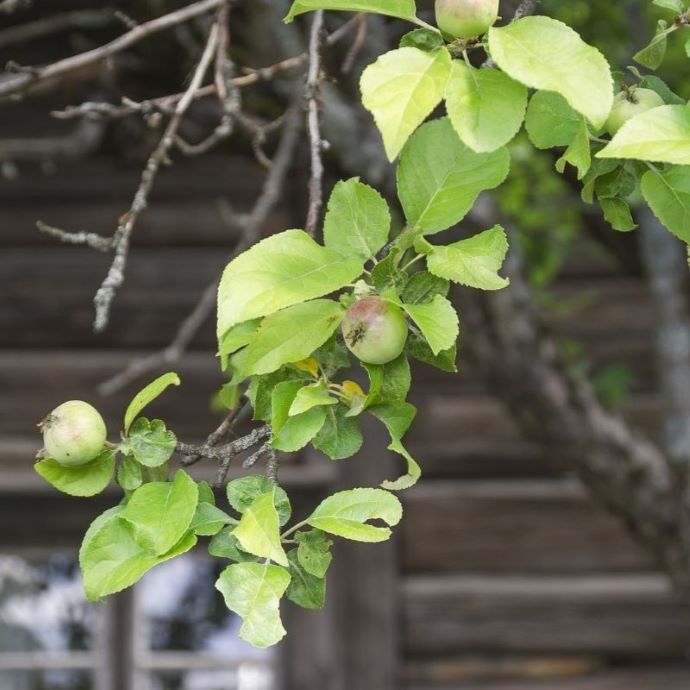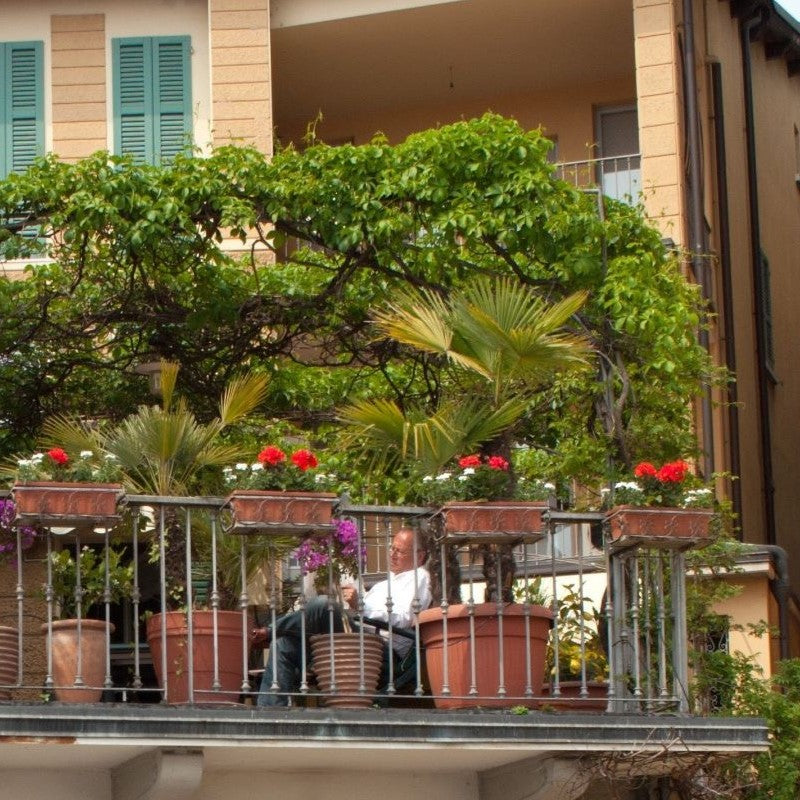Advice & Inspiration
Types of Lavender: Ultimate Buying Guide

Hot lavender, mints, savory, marjoram; the marigold that goes to bed wi’ the sun, and with him rises weeping - Shakespeare, The Winter’s Tale.
Lavender is the new pink - Nicki Minaj.
Lavender is a classically English perennial, famed for its dreamy blue-purple colouring and evocative herbal scent; but when you delve more deeply into the species, there are as many differences between lavenders as betwixt the two renowned bards quoted above. Here’s what we know about types of lavender plants, and which of them you should choose for your garden.
Jump to:
Types of lavender
There are more types of lavender plants out there than ever before, which doesn’t make the choice any easier! And they’re no longer just blue: there are now also pink and white lavenders, various Mediterranean lavenders, as well as hybrid varieties and dwarf cultivars, but the two types you’ll see most often are English (lavandula angustifolia and Lavandula officinalis) and French (Lavandula dentata).

French lavender vs English lavenders
French lavenders have become more popular in recent years. They look stunning, but are they any good? And are they – whisper it – better than the English ones? It all depends on what you want from your lavender.
Looks
English lavender has the blue-purple clusters of small flowers on long stems that we’re all familiar with, but French lavenders are altogether more showy, with larger vibrant purple or magenta rounded flower heads, often topped with petal-like bracts or fringed. Of course, it’s all a matter of personal taste and they do look pretty great in a display together, so I’m declaring this one a draw.
England 1 France 1
Fragrance
Here’s where English lavender really comes into its own – it’s the most fragrant lavender by far, with English lavenders amongst the most popular kinds cultivated for their oils. It’s thought that this is as a result of the plant being more stressed by its harsher growing conditions and producing more fragrant oils as a defence mechanism.
England 2 France 1
Hardiness
As you’d expect, the harsher weather conditions in the UK mean that English lavender is a tougher plant than its French counterpart. English lavenders are fully hardy with a typical frost tolerance down to -15°C, meaning that you can keep them outdoors even in an open site or in the coldest areas of the UK all year round, whereas French lavenders are best suited to milder areas or growing in pots.
England 3 France 1
But… is English lavender really English?
Well this is awkward – this most quintessentially English plant, stalwart of a thousand National Trust shops and Great British menus, is not in fact native to the UK. The lavender we call English is originally from the Mediterranean (specifically around the Pyrenees), but since it’s a hardy plant that grows well in cooler temperatures, it’s ideally suited to our climate.
Lavender seems to have been one of the many plants brought over by the Romans, and by Elizabethan times had boomed in popularity due to its strong scent and reputed plague-repelling qualities. Lavender was a favourite of Queen Victoria, too, who popularised it as a perfume as well as for culinary use.
In 1910, the most popular English lavender, Hidcote, was bred, leading to a resurgence of interest in UK grown lavenders that’s never waned since, and placing lavender firmly at the heart of the English traditional garden.
Italy 1 England 0

Mediterranean lavenders
There are many types of lavender that originate from countries bordering the Mediterranean sea, each with their own particular looks and characteristics. They can all be grown in the UK with a bit of care and the right conditions – mainly, lots of sun!
Spanish lavender (Lavandula stoechas)
Spanish lavender is closely related to the French plants, having chunky white, pink-purple or, more usually, deep purple flower heads topped with pairs of purple bracts that resemble butterfly wings, hence its alternative name of Butterfly Lavender.
These varieties tend to be strongly scented, and are often used in oils and pot pourri. Spanish lavender isn’t crazy about extreme temperatures so doesn’t do well in a frost or a heatwave, but thrives in milder areas of the UK and in more sheltered planting positions.
Portuguese lavender (Lavandula latifolia)
Also known as spike lavender, due to their long leafless stems, these plants are strongly scented with upright, pale lilac flower buds which are widely used in cooking and aromatherapy.
There are two main types of Portuguese lavender; the Broadleaf variety which has furry foliage and Portuguese Giant, which has larger than average flower heads. Like other Mediterranean lavenders, these varieties need full sun and a warm planting position like a south facing balcony or patio. They’re also highly resistant to drought.
Italian lavender (Lavandula stoechas Avonview)
Italian lavenders are closely related to the Spanish varieties, sharing their strong fragrance and wide range of colours including white, deep mauve and violet. These lavenders can grow to half a metre tall and are some of the best for growing in coastal gardens, as they’re especially salt tolerant. Like other Mediterranean lavenders, they grow best in a sunny spot.
Hybrid lavender (Lavandula x intermedia)
Also known as lavandin, these lavenders are a cross between English and Portuguese lavenders, bred for the frost resistance of the former and the heat tolerance of the latter. Best of both worlds? It’s certainly a wise choice for areas with unpredictable or extreme weather conditions.
Lavandin is beautifully scented as you’d expect from a combination of two of the most fragrant lavender types, and comes with deep purple or soft violet flowers. It’s easy to grow and great for beginners, but like most lavenders, needs a sunny planting position and won't thrive in waterlogged ground.

The best lavender varieties for your garden
So which is the best lavender? It all depends on where you want to plant it, your garden style and what you want it for, whether that’s fragrance, colour, height or bee appeal. After conferring with the growers, we’ve collected together the facts to help you choose.
Best lavender for flowering
There are many different colours and forms of lavender flower, but one thing you can count on is that they’ll flower for months. The typical flowering period is from June to August, with English lavenders usually blooming a month before hybrid lavenders.
Some varieties will even bloom again in autumn, and Spanish lavender can bloom all year round in the right conditions. The best lavenders to grow if you want to dry the flowers are English lavenders and French grosso varieties.
Best lavender for colour
This is really a matter of preference, and depends whether you like your lavender more blue, purple, light or intense! For sheer variety, we love the new BeeZee range of lavenders, which come in dark and light blue, white and pink shades.
Our grower recommends: Ultimate Fragrant Lavender Collection - Roots Plants
The hardiest lavender
English lavender is the not especially surprising winner in this category! These lavenders do the best job of dealing with cold, damp weather and are the hardiest types, with a typical RHS rating of H5 (hardy in most places throughout the UK even in severe winters) and the ability to withstand temperatures down to -15°C. They’re also less prone to disease.
Our grower recommends: English Lavender | Lavandula Angustifolia - Roots Plants
Best lavender for bees
Bees and other pollinators can’t keep away from lavender, so it’s ideal for wildlife gardens. It’s said that bees prefer flowers in blue and purple tones, but a study by researchers at the University of Sussex found that white and pink lavenders were just as popular, so it may be the size and shape of the flowers, as well as how long they bloom, that makes them so attractive. It’s also been shown that bees find it easiest to find the flowers whose scent is strongest.
You’ll usually find more bumblebees than honey bees on your lavenders, due to the way each of them feeds – the bumblebees find it easier to extract nectar from tubular shaped flowers due to their long tongues, which allow them to get further into the flowers.
So the best lavender for encouraging bees, it seems, would be English lavender for its continuous blooming and scent, along with hybrid lavender (Lavandin) which is also highly fragranced. The bees in the study above also enjoyed visiting French grosso and gros blu varieties, and Hidcote Giant lavender. I mean from a bee’s point of view, can you ever have too much lavender?
Our grower recommends: English Lavender | Lavandula Angustifolia - Roots Plants

Best lavender for pots
Can I say all of them? You really can’t choose badly here, as all lavenders look fantastic and thrive in pots.
If you’re looking for a particularly compact variety that will go nicely even in a small planter or window box, go for a compact or dwarf variety such as Blue Spear, which grows to a very manageable 30cm height and width or Beezee lavenders, which typically reach a maximum size of 50cm and can be pruned even smaller.
Pots are also the ideal way to grow tender or half hardy Mediterranean lavenders, as you can move them around to catch the sun, and even bring them indoors over winter.
Our grower recommends: Lavender 'Blue Spear' - Roots Plants
Most drought-tolerant lavender
Mediterranean lavenders are naturally the most drought-tolerant, having adapted to long, hot summers and dry soils, but even the English varieties, with their continental origins, are great at dealing with hot weather.
French and Spanish lavender varieties seem to be the best overall for dry conditions, but all lavenders will thrive as part of a low maintenance or Mediterranean planting scheme, only needing regular watering during extended dry spells once they’re established.
Best for scent
English lavender is widely acknowledged to have the best and strongest scent, with the top three being Folgate, Munstead and Hidcote lavenders; all cultivated especially for their oil. Hybrid lavenders (lavandins) are also commercially cultivated and used in the perfume industry.
While Portuguese lavender has an equally strong scent, this tends to have more woody and herbal notes than the English varieties. To get the most from your fragrant lavenders, plant them along a path edge, near a window or door or next to your garden seating.
Our grower recommends: Lavender 'Hidcote Improved' - Roots Plants
Find more lavender planting ideas in our comprehensive lavender design guide.


















